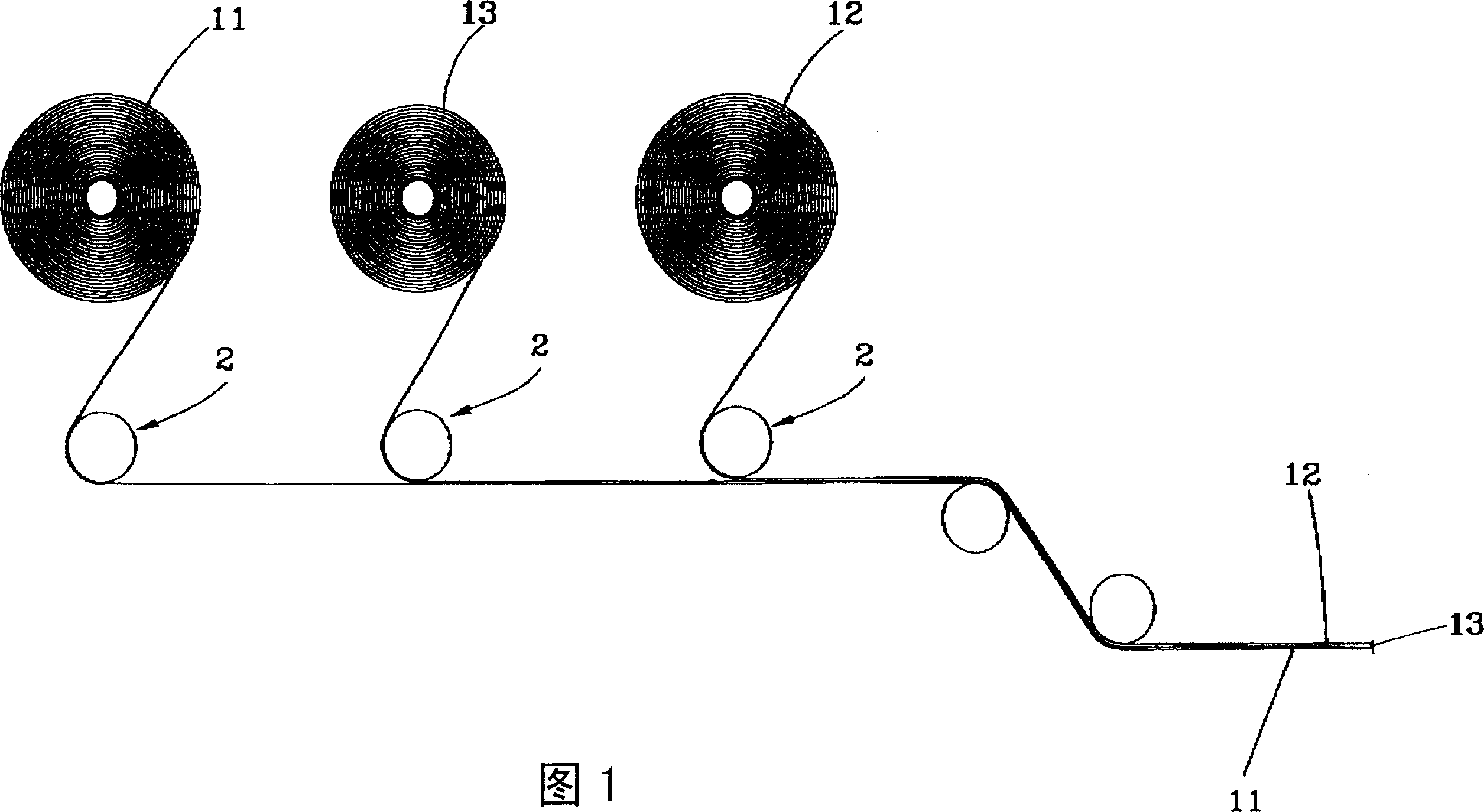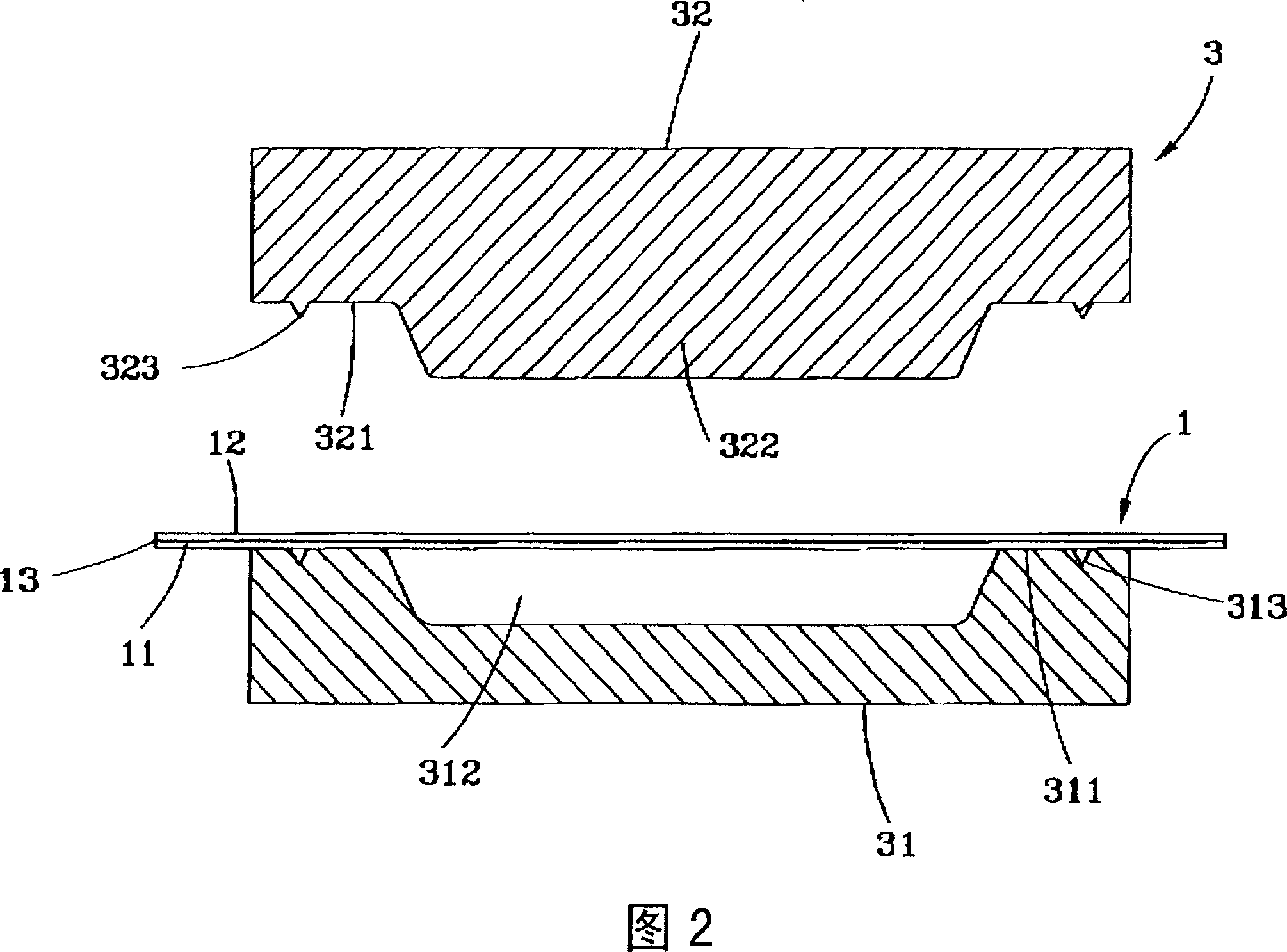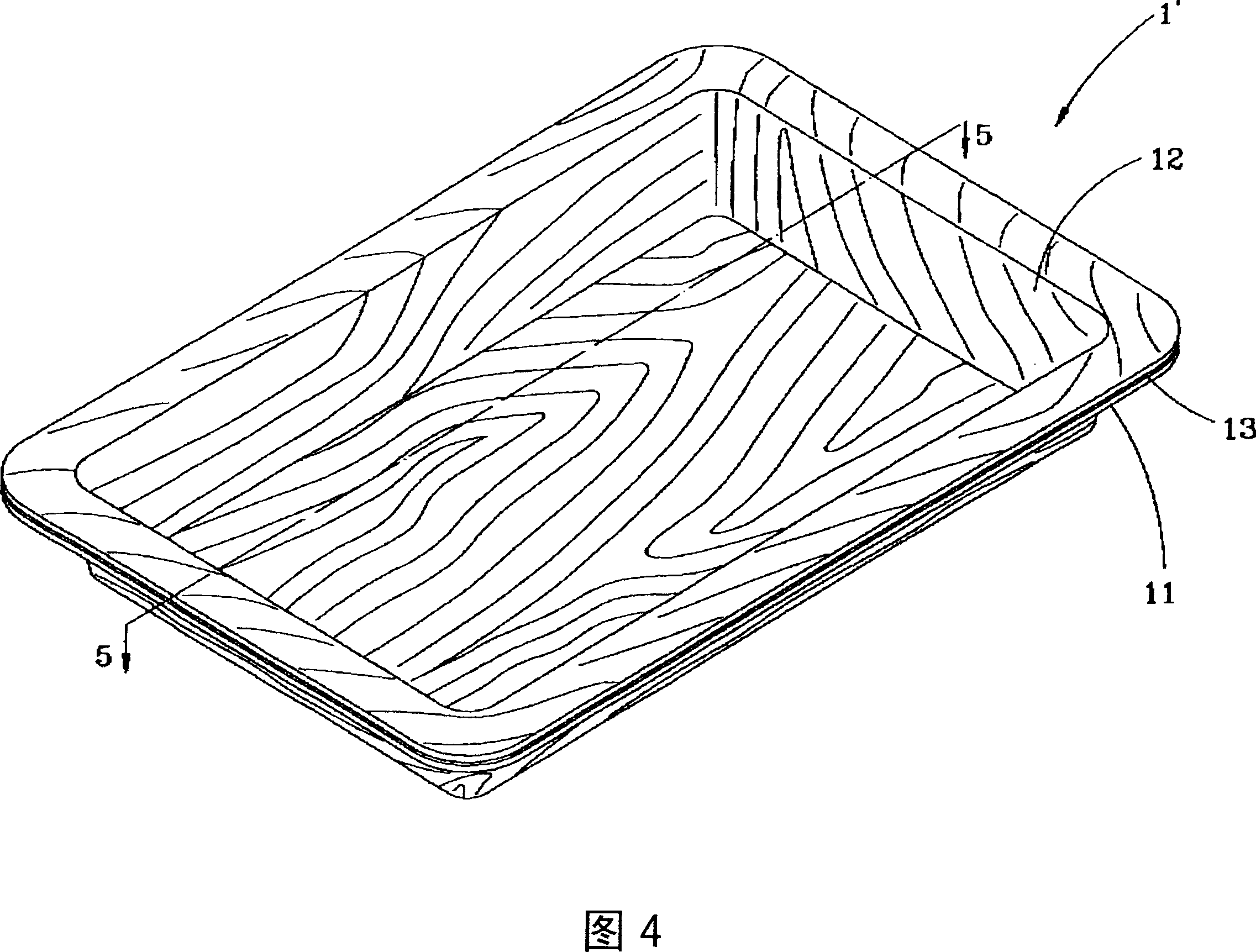Wooden container and its making method
A manufacturing method and wood technology, applied in the direction of manufacturing tools, wood processing utensils, and the joining of wooden veneers, which can solve the problems of brittleness, moisture resistance, poor hardness, etc.
- Summary
- Abstract
- Description
- Claims
- Application Information
AI Technical Summary
Problems solved by technology
Method used
Image
Examples
Embodiment Construction
[0038] Please refer to Figures 1 to 3, the manufacturing method of the preferred embodiment of the present invention includes the following steps:
[0039] Step 1: Prepare two wood veneers 11, 12 and a glued film 13. The wood veneers 11, 12 are obtained from at least six-year-old Malacca (Fallcata Albisia) species (about 35 cm in diameter), and the volume is cut into 0.5 mm. thickness, and then moderately dried; the glued film 13 is made of a natural long-fiber material, and is made by coating or soaking edible glue or bio-glue on the upper and lower surfaces, and the long-fiber material is based on The advantage of wood is that it is easy to recycle and takes into account the needs of environmental protection.
[0040] Step 2: Convey and stack the wood veneers 11, 12 and the glued film 13 with a plurality of rollers 2, so that the glued film 13 is stacked between the two wood veneers 11, 12, referring to Fig. 1, and passing through a cutting machine (Fig. (not shown in the m...
PUM
 Login to View More
Login to View More Abstract
Description
Claims
Application Information
 Login to View More
Login to View More - R&D
- Intellectual Property
- Life Sciences
- Materials
- Tech Scout
- Unparalleled Data Quality
- Higher Quality Content
- 60% Fewer Hallucinations
Browse by: Latest US Patents, China's latest patents, Technical Efficacy Thesaurus, Application Domain, Technology Topic, Popular Technical Reports.
© 2025 PatSnap. All rights reserved.Legal|Privacy policy|Modern Slavery Act Transparency Statement|Sitemap|About US| Contact US: help@patsnap.com



